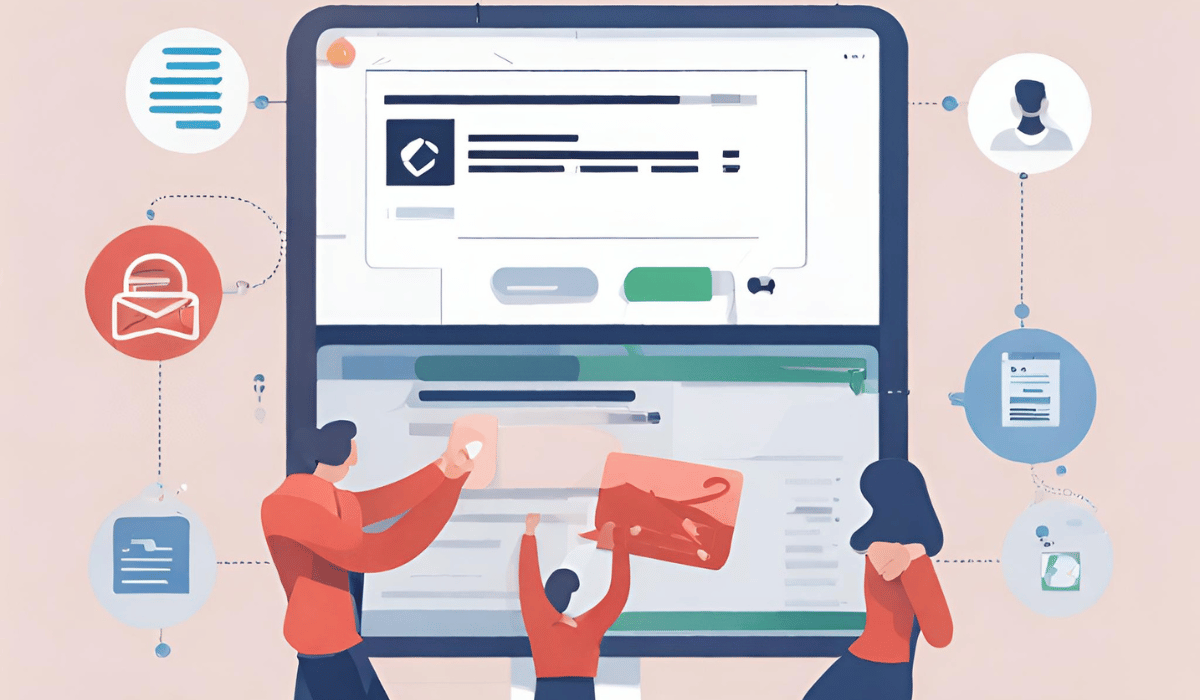Overview of Qualtrics as a Popular Survey Platform

Qualtrics is a popular online survey platform that allows users to create and distribute surveys, analyze data, and generate reports. It is widely used by businesses, academic institutions, and researchers to gather feedback and insights from customers, employees, students, and other stakeholders. One of the key features of Qualtrics is its user-friendly interface, which allows users to easily create surveys using a drag-and-drop editor.
Risks of Unencrypted Data
Unencrypted data poses a significant risk to the security and privacy of individuals and organizations. When data is not encrypted, it can be easily intercepted and accessed by unauthorized parties, such as hackers or cybercriminals. This can lead to a range of negative consequences, including identity theft, financial fraud, and reputational damage. In addition to the risk of data breaches, unencrypted data can also violate regulations and laws related to data protection and privacy.
Consequences of Data Breaches And Unauthorized Access
Data breaches and unauthorized access can have severe consequences for individuals and organizations. Some of the consequences include:
1. Identity theft: When personal information is accessed by unauthorized parties, it can be used to steal someone’s identity. This can lead to financial losses, damage to credit scores, and other negative outcomes.
2. Financial fraud: Cybercriminals can use stolen data to commit financial fraud, such as opening fraudulent accounts or making unauthorized purchases.
3. Legal and regulatory fines: Organizations that fail to comply with data security regulations can face significant fines and legal penalties.
4. Loss of customer trust: A data breach can damage an organization’s reputation and erode customer trust, leading to a loss of business.
5. Business disruption: Recovering from a data breach can be time-consuming and costly, leading to disruptions in normal business operations.
Encrypting Qualtrics Data on Download

Encrypting Qualtrics data on download is an important step in ensuring the security and confidentiality of sensitive information. Here are some steps you can take to encrypt Qualtrics data:
1. Use the Qualtrics Export Encryption feature: Qualtrics has a built-in export encryption feature that allows you to encrypt your data when you download it. This feature uses AES-256 encryption, which is a strong encryption standard.
2. Use a third-party encryption tool: If you prefer to use a different encryption tool, you can export your data in CSV format and then use a third-party encryption tool to encrypt the file.
3. Use a secure file transfer protocol: When transferring encrypted data, it’s important to use a secure file transfer protocol, such as SFTP or HTTPS. These protocols encrypt the data in transit, ensuring that it can’t be intercepted by unauthorized parties.
4. Use strong passwords: When encrypting your data, be sure to use strong passwords that are difficult to guess. Avoid using common words or phrases, and use a combination of uppercase and lowercase letters, numbers, and symbols.
By taking these steps, you can help ensure that your Qualtrics data is secure and protected from unauthorized access.
Verifying Encrypted Data Integrity

Verifying encrypted data integrity is an important step in ensuring the security of your Qualtrics data. One way to do this is to use a message authentication code (MAC), which is a cryptographic checksum that is generated using a secret key. The MAC can be used to verify that the data has not been tampered with or modified in transit. Another way to verify encrypted data integrity is to use a digital signature.
Performing Data Integrity Checks After Encryption
Performing data integrity checks after encryption is a crucial step in ensuring the security and authenticity of your data. One common method to verify data integrity is by generating a message authentication code (MAC) using a secret key. This code acts as a cryptographic checksum and can be used to ensure that the data has not been tampered with during transmission.
Ensuring Successful Decryption And Data Recovery
Ensuring successful decryption and data recovery is essential to maintaining the integrity of your data. One way to do this is by using error-correcting codes, which can detect and correct errors that may occur during transmission or storage. Another method is to use redundancy in your data storage, such as creating backups or using RAID (redundant array of independent disks) systems. It is also important to regularly test your decryption and data recovery processes to ensure they are working correctly and efficiently.
Addressing Potential Decryption Errors or Issues
To address potential decryption errors or issues, it is important to first identify the root cause of the problem. This may involve reviewing your encryption and decryption processes to ensure they are being executed correctly. It may also involve checking for any software or hardware malfunctions that could be affecting the decryption process. Once the root cause of the problem has been identified, steps can be taken to resolve the issue. This may involve updating or reinstalling software, repairing or replacing hardware components and adjusting encryption.
Storing and Sharing Encrypted Data
When it comes to storing and sharing encrypted data, there are a few things to keep in mind. First, make sure that you are using a secure and reliable encryption method. This can include using strong passwords, two-factor authentication, and encryption software that is regularly updated. Second, be mindful of where you store your encrypted data. It’s best to keep it in a secure location, such as a password-protected folder on your computer or in a cloud storage service that uses encryption.
Secure Storage Options for Encrypted Files
When it comes to storing encrypted files, there are several security options available. Here are a few:
1. Password-protected folders: You can create a password-protected folder on your computer to store your encrypted files. This provides an added layer of security, as anyone who wants to access the folder will need to know the password.
2. Cloud storage services: Many cloud storage services, such as Google Drive, Dropbox, and OneDrive, offer encryption options for files stored on their servers.
Managing Access Controls And Permissions
To manage access controls and permissions for your files, you can use tools such as:
1. Access control lists (ACLs): These allow you to define specific users or groups and assign them permission to access or modify files.
2. Role-based access control (RBAC): This method assigns permissions based on job roles or responsibilities. For example, a manager may have access to sensitive financial data, while an intern may only have access to non-sensitive information.
Safely Sharing Encrypted Data With Authorized Users
To safely share encrypted data with authorized users, you can use tools such as:
1. Secure file sharing services: These services provide a secure platform for sharing encrypted files with authorized users. Examples include Dropbox, Google Drive, and OneDrive.
2. Password-protected zip files: You can encrypt a file and then compress it into a password-protected zip file. You can then share the password with authorized users.
Monitoring and Auditing Data Security
To ensure the security of your data, it is important to monitor and audit it regularly. Here are some tips for monitoring and auditing data security:
1. Use security software: Install and use security software such as antivirus and firewall to protect your data from external threats.
2. Regularly review access logs: Review access logs to identify any unauthorized access attempts or suspicious activity.
3. Conduct regular security assessments: Conduct regular security assessments to identify vulnerabilities and address them before they can be exploited.
Conducting Periodic Security Audits And Assessments
It is crucial to ensure the safety and integrity of your data. This can involve reviewing security policies and procedures, testing security controls, and identifying potential risks and threats. It is important to involve all relevant stakeholders in the auditing process and to implement any necessary changes or improvements based on the findings. Additionally, it is important to stay up-to-date with the latest security trends and technologies and to continuously educate employees on best practices for data security.
Addressing Vulnerabilities And Enhancing Security Measures
To address vulnerabilities and enhance security measures, it is important to conduct regular risk assessments to identify potential weaknesses in the system. This can include performing penetration testing to identify vulnerabilities in the network or software and implementing security controls such as firewalls, intrusion detection systems, and multi-factor authentication. Additionally, it is important to have a comprehensive incident response plan in place in case of a security breach. This plan should include steps for identifying and containing the breach, notifying relevant parties, and restoring normal operations.
Frequently Asked Questions (FAQs)
How can I encrypt data downloaded from Qualtrics?
To encrypt data downloaded from Qualtrics, you can use a file encryption tool such as 7-Zip or WinZip. These tools allow you to password-protect and encrypt your files before downloading them. Additionally, you can use Qualtrics’ own data encryption features to encrypt your data at rest and in transit. To do this, you can enable SSL encryption for your surveys and use Qualtrics’ data security options to encrypt your data while it is stored on their servers.
What encryption methods or tools should I use?
There are several encryption methods and tools you can use to protect your data. Some popular encryption methods include AES (Advanced Encryption Standard), RSA (Rivest-Shamir-Adleman), and SHA (Secure Hash Algorithm). As for encryption tools, 7-Zip and WinZip are popular options for file encryption. However, it’s important to ensure that the encryption method and tool you choose are appropriate for the level of security you require and that you follow best practices for encryption, such as
Can encrypted data be decrypted without the key?
No, encrypted data cannot be decrypted without the key. The purpose of encryption is to make the data unreadable without the key, which serves as a decryption mechanism. Without the key, the encrypted data will appear as random and meaningless characters. Therefore, it’s essential to keep the key secure and not share it with unauthorized parties.
What are the best practices for storing and sharing encrypted data?
Here are some best practices for storing and sharing encrypted data:
1. Use strong encryption algorithms: Use encryption algorithms that are widely accepted and considered to be secure, such as AES (Advanced Encryption Standard).
2. Use strong passwords or keys: Use long and complex passwords or keys to encrypt your data. Avoid using easily guessable passwords or keys, such as your name or birthdate.
How do I ensure the integrity of encrypted data during decryption?
Here are some best practices to ensure the integrity of encrypted data during decryption:
1. Use trusted decryption tools: Use decryption tools that are widely accepted and considered to be secure. Avoid using tools that are not well-known or that have a questionable reputation.
2. Verify the authenticity of the data: Before decrypting the data, verify that it has not been tampered with or altered in any way. This can be done by using digital signatures or checksums.
How can I protect data during transmission from Qualtrics?
To protect data during transmission from Qualtrics, you can take the following steps:
1. Use a secure connection: Ensure that you are using a secure connection such as HTTPS to transmit data. This will encrypt the data during transmission and prevent unauthorized access.
2. Use strong passwords: Use strong passwords to protect your Qualtrics account. Avoid using easily guessable passwords and consider using a password manager to generate and store strong passwords.
